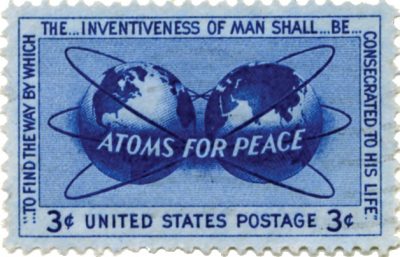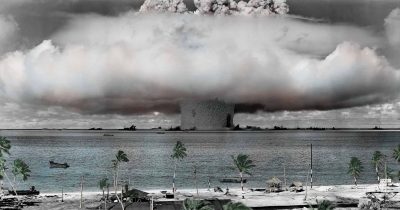×


We have detected your country as:
Please click here to go to the USA website or select another country from the dropdown list.
by: Cheryl Hauer, International Vice President
“There must be no return to the 2015 nuclear deal,” said Israeli Prime Minister Benjamin Netanyahu in a December 2020 speech. “We must maintain an uncompromising policy to ensure that Iran does not develop nuclear weapons.” In light of Iran’s intransigence and the international community’s indecisiveness, his words rang with desperation. Israel, perhaps more than any other country, is conscious of the hazard a nuclear Iran poses to global security, as the Jewish state deals on a daily basis with Iranian aggression in its own backyard. Netanyahu has repeatedly warned of the danger of weapons of mass destruction in the hands of a nation bent on world domination.
Once classified as a “rogue” state along with Cuba and North Korea, today Iran carries the label “state of concern.” Since 2003, worldwide alarm over Iranian nuclear ambition has increased even as that nation constantly engages in a game of cat and mouse with the International Atomic Energy Agency (IAEA). And all the while, Supreme Leader Ayatollah Khamenei repeatedly denies that his country is creating a nuclear arsenal, claiming that weapons of mass destruction are forbidden under Islam. So wherein lies the truth? What is actually in that Iranian arsenal, and where did it come from?
 US President Dwight D. Eisenhower addressed the United Nations General Assembly in December of 1953, stating, “If a danger exists in the world, it is danger shared by all; and equally, if hope exists in the mind of one nation, that hope should be shared by all.” Thus he introduced Atoms for Peace, his well-intentioned brain child, a program that would call upon governments of the world to make joint contributions from their stockpiles of normal uranium and fissionable material to an international atomic energy agency. The United States would provide research reactors, fuel and scientific training to developing countries wanting civilian nuclear programs. In exchange, recipient states would commit to use the technology and education solely for peaceful, civilian purposes. Today, the program is widely criticized for facilitating nuclear proliferation, spreading dual use nuclear technology and materials, such as highly enriched uranium, and setting nations like Iran on the path to the development of nuclear weapons.
US President Dwight D. Eisenhower addressed the United Nations General Assembly in December of 1953, stating, “If a danger exists in the world, it is danger shared by all; and equally, if hope exists in the mind of one nation, that hope should be shared by all.” Thus he introduced Atoms for Peace, his well-intentioned brain child, a program that would call upon governments of the world to make joint contributions from their stockpiles of normal uranium and fissionable material to an international atomic energy agency. The United States would provide research reactors, fuel and scientific training to developing countries wanting civilian nuclear programs. In exchange, recipient states would commit to use the technology and education solely for peaceful, civilian purposes. Today, the program is widely criticized for facilitating nuclear proliferation, spreading dual use nuclear technology and materials, such as highly enriched uranium, and setting nations like Iran on the path to the development of nuclear weapons.
The Atoms for Peace program secured the foundations for Iran’s nuclear development by providing key nuclear technology and education. The nation’s nuclear program began under Mohamed Reza Shah’s rule in 1957, when the US and Iran agreed to a civilian nuclear cooperation arrangement. Two years later, the Shah (Iranian term for “king”) established the Tehran Nuclear Research Center (TNRC) and negotiated with the US to provide nuclear technology and materials. In 1967, the US supplied Iran with a 5-megawatt nuclear research reactor, along with highly enriched uranium to fuel it, capable of producing 600 grams of plutonium per year in spent fuel, all housed at the TRNC. It has been revealed, however, that as early as 1990, the reactor was used for the production of a radioactive substance used to start a chain reaction inside a nuclear weapon. In 1975, the Shah struck a deal with MIT to create a specialized master’s program providing scientific and technological training on nuclear energy specifically for Iranians. The program provided Iran with its first set of professional nuclear engineers.
 When the 1979 Iranian revolution deposed the Shah, the world faced the harsh reality that today’s ally can quickly become tomorrow’s enemy. The US abruptly ended its civilian nuclear cooperation agreement with Iran and ceased its supply of highly enriched uranium. Unfortunately, Iran was able to find other partners willing to help expand its nuclear program, particularly in areas applicable to the military use of nuclear energy.
When the 1979 Iranian revolution deposed the Shah, the world faced the harsh reality that today’s ally can quickly become tomorrow’s enemy. The US abruptly ended its civilian nuclear cooperation agreement with Iran and ceased its supply of highly enriched uranium. Unfortunately, Iran was able to find other partners willing to help expand its nuclear program, particularly in areas applicable to the military use of nuclear energy.
Pakistan has been a partner in Iran’s nuclear development since 1985. Initially, Islamabad provided technical drawings of a P-1 centrifuge, technology used to enrich uranium. But between 1994 and 1996, it gave Iran components for 500 centrifuges and designs for the more efficient and advanced P-2 centrifuge that Pakistan uses in its own nuclear weapons program. Both the P-1 and P-2 centrifuges are in use at Iran’s large enrichment facility.
China has also contributed to Iran’s nuclear capabilities, providing a large quantity of “yellowcake,” a converted form of uranium that has both civilian and military applications, as well as large amounts of uranium tetrafluoride and uranium dioxide. Further, Beijing supplied the Esfahan nuclear technology center with one 27-watt thermal reactor and one heavy water zero power reactor, all without declaration to the IAEA. Finally, Russia has also contributed significantly to Iran’s nuclear development, providing technology, fuel rods and design assistance for reactors.
In 2015, an international agreement was signed with Iran designed to limit its nuclear development. Netanyahu referred to it as “a very bad deal,” and the US eventually withdrew, reinstituting sanctions on Iran. Subsequently, Iranian leadership has announced several times that they are exceeding the development limits set by the agreement. And inspections by a global watchdog have been less than productive in determining exactly what Iran is up to. At its height in 2015, Iran possessed over 20,000 gas centrifuges at three major facilities. No one is certain where we stand today, but a March 2020 report from the IAEA suggests that Iran has tripled its stockpile of low enriched uranium since November 2019 and has developed and tested a nuclear-capable ballistic missile.
Experts say that means Iran has yet to develop a nuclear weapon. However, those same experts say the country is “months” away from having that weapon up and ready. In the meantime, Iranian leaderships’ claims of innocence are falling on deaf ears, and as discussions of reinstituting the 2015 agreement are increasing, major international leaders are suggesting a more prudent approach. Whatever happens, we can only hope that Netanyahu’s cry for an “uncompromising policy” that ensures Iran will not move forward in the development of nuclear weapons is heard, heeded and enforced by the nations of the world.
Photo Credit: Click on photo to see photo credit
All logos and trademarks in this site are property of their respective owner. All other materials are property of Bridges for Peace. Copyright © 2024.
Website Site Design by J-Town Internet Services Ltd. - Based in Jerusalem and Serving the World.